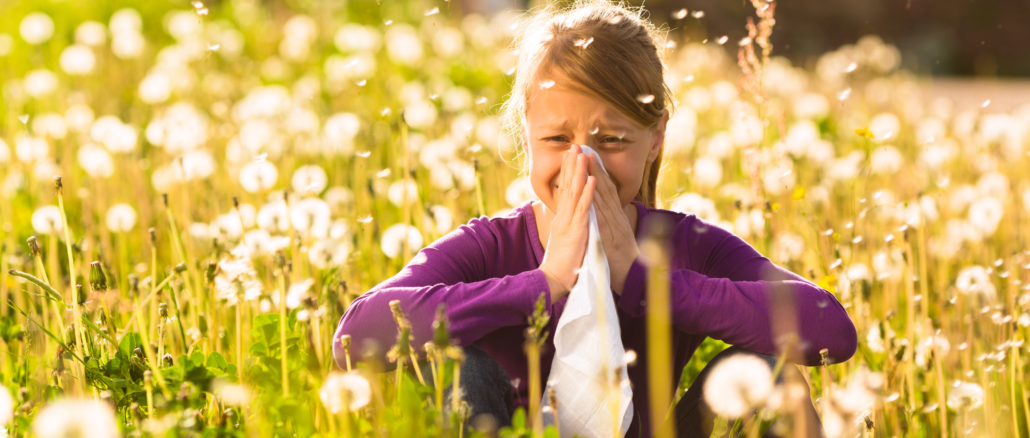
As we transition further into the warmer weather, parents should prepare for the increase in pollen, which can be a nightmare for little one’s allergies. In fact, 30% of children suffer from hay fever, which can cause a great deal of discomfort – impacting their sleep and causing them to feel run down.
In QLD, hay fever season peaks from December to April so to help parents navigate this tricky time of year, below is a summary of top tips to manage allergies and hay fever this summer.
1. Track the pollen count
An effective way to minimise hay fever symptoms is through regular monitoring of the pollen count. These days, many weather forecast apps contain the expected pollen count of the day, and websites such as AusPollen provide accurate and localised information if you need more detailed predictions. Keeping up to date with the pollen forecast is a good way to help your child prepare and have a plan in place if a particularly high pollen count is predicted.
2. Prevent contact with irritants
If you’re facing a high pollen count day, a good way to manage your child’s symptoms is by limiting their time spent outdoors to reduce the likelihood of an allergic reaction. It can be tricky keeping your child inside on a sunny summer day however warm weather can significantly contribute to the level of pollen in the air.
3. Keep indoor spaces clean and was linen
Pollen can stick and transfer to different surfaces easily, whether this be the kitchen counter, couch or bed linen. To reduce the amount of pollen in your house, make sure to clean surfaces and wash linens regularly. Particles can also stick to skin and clothing, so if your child does go outside on a high pollen count day, get them to change their clothes when they return to avoid a transfer of pollen to other surfaces, especially inside their bedroom.
4. Stock up the medicine cabinet
If your child suffers from hay fever, it’s likely they will have an allergic reaction at some point, so be prepared by having the necessary medicine on hand. Antihistamines can be a good form of hay fever relief, and work to block histamines and reduce allergies. Consider stocking your medicine cabinet with children’s hay fever relief products such as Aerius for Children or Chemist’s Own Children’s Hayfever and Allergy Relief Syrup. Of course, it’s important to always speak to your trusted healthcare provider before introducing your child to a new medication. Eye drops, specifically designed to help soothe itchy or dry eyes as a result of allergies, are another good product to have on hand. Consider a product like Murine Relief Eye Drops or APOHEALTH’s Allergy Eye Drops.
5. Shower at night
Encouraging your child to shower at night is an effective method to wash pollen from their skin, and prevent it from transferring onto their pillow and sheets. If pollen transfers to the sheets, this can result in a disrupted sleep for your child and a prolonged allergic reaction throughout the night and next day, compounding their run-down feeling. By showering in the evening, children can wash off the pollen and ensure they won’t contaminate their bedsheets, resulting in a restful night’s sleep.
SheSociety is a site for the women of Australia to share our stories, our experiences, shared learnings and opportunities to connect.

Leave a Reply